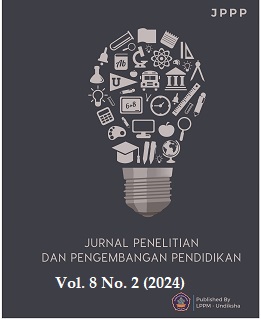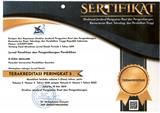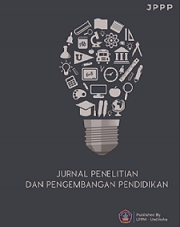Video-assisted Cooperative Physical Learning Model to Improve Student Learning Achievement
DOI:
https://doi.org/10.23887/jppp.v8i2.65551Keywords:
Collaborative Teamwork Learning, Learning Video, Learning Achievement, Physical EducationAbstract
The lecture method, which focuses too much on theoretical knowledge, fails to provide opportunities for students to practice healthy living and safety skills, which should be the core of health education. This leads to the diversity of student learning achievements. This study aims to analyze the effect of the Collaborative Teamwork Learning-based physical education learning model assisted by learning videos on student learning achievement. The subjects involved in this study amounted to 40 students. This type of research is experimental research, with the research design used as a quasi-experiment called nonequivalent posttest-only control group design. The data collection methods used include observation, questionnaires, and tests, while the instrument used is a learning achievement test. After the data is collected, it is analyzed using the data analysis method used in this research including descriptive analysis and inferential statistical analysis. The results showed that the physical education learning model based on Collaborative Teamwork Learning with the help of learning videos proved to influence learning achievement. Therefore, it can be concluded that this model can be one of the solutions in the physical education learning process. The development of this learning model is expected to positively contribute to improving student learning achievement, understanding, and leadership skills in physical education courses. The Collaborative Teamwork Learning-based physical education learning model with the help of learning videos is one alternative that can be used to increase the effectiveness of physical education learning.
References
Anas, S. (2009). Pengantar evaluasi pendidikan. Jakarta: Rajawali Pers.
Arke, I. G., Wijaya, M. A., & Parta Lesmana, K. Y. (2021). Pelaksanaan Pembelajaran Daring Berbantuan Video Tutorial pada Masa Pandemi Covid-19. Jurnal Ilmu Keolahragaan Undiksha, 9(3), 165. https://doi.org/10.23887/jiku.v9i3.39478. DOI: https://doi.org/10.23887/jiku.v9i3.39478
Aryanti, S., Victorian, A., & Bayu, W. (2021). Learning of Sepak Sila Technique Based Video For Sepak Takraw Course. https://doi.org/10.4108/eai.16-10-2020.2305202. DOI: https://doi.org/10.4108/eai.16-10-2020.2305202
Asrori, M., & Tjalla, A. (2020). Increasing Teamwork Capacity of High School Students through Collaborative Teamwork Learning. American Journal of Educational Research, 8(1), 46–50. https://doi.org/10.12691/education-8-1-7. DOI: https://doi.org/10.12691/education-8-1-7
Boholano, H. (2017). Smart social networking: 21st Century teaching and learning skills. Research in Pedagogy, 7(2), 21–29. https://doi.org/10.17810/2015.45. DOI: https://doi.org/10.17810/2015.45
Bystrova, T. (2020). Infographics As a Tool for Improving Effectiveness of Education. KnE Social Sciences, 2020, 152–158. https://doi.org/10.18502/kss.v4i13.7710. DOI: https://doi.org/10.18502/kss.v4i13.7710
Chu, Y. H., & Li, Y. C. (2022). The Impact of Online Learning on Physical and Mental Health in University Students during the COVID-19 Pandemic. International Journal of Environmental Research and Public Health, 19(5). https://doi.org/10.3390/ijerph19052966. DOI: https://doi.org/10.3390/ijerph19052966
Daniati, S., Saputri, N., & Gatrimananda, Z. (2022). Efektivitas Model Pembelajaran Collaborative Teamwork Learning (CTL) Berbasis Praktikum pada Mata Kuliah Rias Fantasi untuk Meningkatkan Softskill Mahasiswa. TEKNOBUGA: Jurnal Teknologi Busana Dan Boga, 10(2), 140–149. https://doi.org/10.15294/teknobuga.v10i2.37277. DOI: https://doi.org/10.15294/teknobuga.v10i2.37277
Dewi, R. P., Kurniati, T., & Fitriani, F. (2019). Efektivitas Model Collaborative Teamwork Learning Berbasis Praktikum Pada Sub Materi Reaksi Pengendapan Terhadap Sikap Ilmiah Dan Hasil Belajar Siswa Kelas Xi Ipa Sma Negeri 2 Sungai Raya. AR-RAZI Jurnal Ilmiah, 7(1), 82–89. https://doi.org/10.29406/ar-r.v7i1.1385. DOI: https://doi.org/10.29406/ar-r.v7i1.1385
Expósito, A., Sánchez-Rivas, J., Gómez-Calero, M. P., & Pablo-Romero, M. P. (2020). Examining the use of instructional video clips for teaching macroeconomics. Computers & Education, 144, 103709. https://doi.org/https://doi.org/10.1016/j.compedu.2019.103709. DOI: https://doi.org/10.1016/j.compedu.2019.103709
Falcione, S., Campbell, E., McCollum, B., Chamberlain, J., Macias, M., Morsch, L., & Pinder, C. (2019). Emergence of Different Perspectives of Success in Collaborative Learning. The Canadian Journal for the Scholarship of Teaching and Learning, 10(2). https://doi.org/10.5206/cjsotl-rcacea.2019. DOI: https://doi.org/10.5206/cjsotl-rcacea.2019.2.8227
Ghahramani, A., & Salimi, G. (2022). Team-based and Collaborative Learning Studies in Flipped Classrooms : A Scoping Review in Higher Education. Interdisciplinary Journal of Virtual Learning in Medical Sciences, 13(3), 149–164. https://doi.org/10.30476/articles.
Jiwa, W. M., Atmadja, N. B., & Yudana, M. (2014). Pengaruh Model Collaborative Teamwork Learning Terhadap Motivasi dan Prestasi Belajar Sosiologi Siswa Kelas X SMA Negeri 1 Amplapura. E-Journal Program Pascasarjana Universitas Pendidikan Ganesha, 4(1), 1–7. https://doi.org/10.23887/japi.v4i1.986.
Kanca, I. N., Ginaya, G., & Sri Astuti, N. N. (2021). Collaborative network learning (CNL) on students’ online learning. International Journal of Linguistics, Literature and Culture, 7(5), 362–370. https://doi.org/10.21744/ijllc.v7n5.1923. DOI: https://doi.org/10.21744/ijllc.v7n5.1923
Le, H., Janssen, J., & Wubbels, T. (2018). Collaborative learning practices: teacher and student perceived obstacles to effective student collaboration. Cambridge Journal of Education, 48(1), 103–122. https://doi.org/10.1080/0305764X.2016.1259389. DOI: https://doi.org/10.1080/0305764X.2016.1259389
Lopes, R. P., Mesquita, C., de la Cruz Del Río-Rama, M., & Álvarez-García, J. (2018). Collaborative learning experiences for the development of higher-order thinking. Espacios, 39(17).
López, M., Jiménez, J. M., Martín-Gil, B., Fernández-Castro, M., Cao, M. J., Frutos, M., & Castro, M. J. (2020). The impact of an educational intervention on nursing students’ critical thinking skills: A quasi-experimental study. Nurse Education Today, 85, 104305. https://doi.org/10.1016/j.nedt.2019. DOI: https://doi.org/10.1016/j.nedt.2019.104305
Madu, B. C. (2020). Scientific Explanation of Phenomenon, Imagination and Concept Formation as Correlates of Students’ Understanding of Physics Concepts. Journal of Natural Sciences Research, 11(16), 17–28. https://doi.org/10.7176/jnsr/11-16-03. DOI: https://doi.org/10.7176/JNSR/11-16-03
Marhadi. (2019). Permainan Ludo sebagai Media Pembelajaran Pendidikan Jasmani, Olahraga dan Kesehatan pada Siswa Sekolah Dasar. Tadulako Journal Sport Sciences and Physical Education Volume, 7(2), 19–31.
Marshel, J., & Ratnawulan. (2020). Analysis of Students Worksheet (LKPD) integrated science with the theme of the motion in life using integrated connected type 21st century learning. Journal of Physics: Conference Series, 1481(1). https://doi.org/10.1088/1742-6596/1481/1/012046. DOI: https://doi.org/10.1088/1742-6596/1481/1/012046
Maryati, M., Zubaidah, E., & Mustadi, A. (2019). A content analysis study of scientific approach and authentic assessment in the textbook of Curriculum 2013. Jurnal Prima Edukasia, 7(2), 128–138. https://doi.org/10.21831/jpe.v7i2.26792. DOI: https://doi.org/10.21831/jpe.v7i2.26792
Müller, F. A., & Wulf, T. (2020). Technology-supported management education: a systematic review of antecedents of learning effectiveness. International Journal of Educational Technology in Higher Education, 17(1). https://doi.org/10.1186/s41239-020-00226-x. DOI: https://doi.org/10.1186/s41239-020-00226-x
Murillo-Zamorano, L. R., López Sánchez, J. Á., & Godoy-Caballero, A. L. (2019). How the flipped classroom affects knowledge, skills, and engagement in higher education: Effects on students’ satisfaction. Computers & Education, 141, 103608. https://doi.org/https://doi.org/10.1016/j.compedu.2019. DOI: https://doi.org/10.1016/j.compedu.2019.103608
Mustafa, P. S., & Dwiyogo, W. D. (2021). Kurikulum Pendidikan Jasmani, Olahraga, dan Kesehatan di Indonesia Abad 21. Jurnal Riset Teknologi Dan Inovasi Pendidikan (JARTIKA), 3(2), 422–438. https://doi.org/10.36765/jartika.v3i2.268. DOI: https://doi.org/10.36765/jartika.v3i2.268
Notoatmodjo, S. (2014). Pendidikan dan Perilaku Kesehatan (Edisi Revisi). Jakarta. Rineka Cipta. 2013.
Okilanda, A., Dlis, F., Humaid, H., Putra, D. D., Arisman, & Muslimin. (2021). Defense warm-up exercise material for 13-age athlete using video technology in covid-19 era. International Journal of Human Movement and Sports Sciences, 9(4), 629–634. https://doi.org/10.13189/saj.2021.090404. DOI: https://doi.org/10.13189/saj.2021.090404
Padilla, M. E., Frietze, G. A., Hartman, J., & Mendez, I. A. (2020). Assessing the impact of faculty research profile videos on students’ perceptions towards research at a school of pharmacy. Currents in Pharmacy Teaching and Learning, 12(10), 1239–1244. https://doi.org/https://doi.org/10.1016/j. DOI: https://doi.org/10.1016/j.cptl.2020.05.008
Pertiwi, K. R. (2012). Pengembangan model pendidikan kesehatan dalam kurikulum nasional sekolah dasar di Indonesia : studi penerapan personal social health education di kurikulum sekolah dasar Inggris Raya. Jurdik Biologi, 1–15.
Primadiati, I. D., & Djukri, D. (2017). Pengaruh model collaborative learning terhadap peningkatan motivasi dan hasil belajar IPA siswa kelas IV SD. Jurnal Prima Edukasia, 5(1), 47–57. https://doi.org/10.21831/jpe.v5i1.7712. DOI: https://doi.org/10.21831/jpe.v5i1.7712
Rachman, H. F., Sudiana, I. K., & Wijaya, M. A. (2020). Pengaruh Model Pembelajaran Berbantuan Aplikasi Google Classroom Terhadap Hasil Belajar Bola Basket. Jurnal Penjakora, 7(1), 57. https://doi.org/10.23887/penjakora.v7i1.24441. DOI: https://doi.org/10.23887/penjakora.v7i1.24441
Raihanah, Saadi, P., & Bakti, I. (2018). Meningkatkan Aktivitas dan Hasil Belajar Siswa Melalui Model Collaborative Teamwork Learning pada Materi Hidrokarbon di Kelas X 3 SMA Negeri 12 Banjarmasin. Quantum: Jurnal Inovasi Pendidikan Sains, 9(1), 61–69. https://doi.org/10.20527/quantum.v9i1.4861.
Rogers, J., & Revesz, A. (2019). Experimental and Quasi-Experimental. ResearchGate, 133–143. DOI: https://doi.org/10.4324/9780367824471-12
Sholeha, D. S., Suyatna, A., & Herlina, K. (2019). Pengaruh Lembar Kerja Peserta Didik Berbasis Collaborative Teamwork Learning Terhadap Hasil Belajar. Pedagogia : Jurnal Pendidikan, 8(2), 171–187. https://doi.org/10.21070/pedagogia.v8i2.2447. DOI: https://doi.org/10.21070/pedagogia.v8i2.2447
Simbolon, M. D., Wahjoedi, W., & Spyanawati, N. L. P. (2021). Pengembangan Media Video Pembelajaran Materi Passing Bolavoli Smp Kelas Vii. Jurnal Pendidikan Jasmani, Olahraga Dan Kesehatan Undiksha, 8(3), 116. https://doi.org/10.23887/jjp.v8i3.33766. DOI: https://doi.org/10.23887/jjp.v8i3.33766
Suharsimi Arikunto. (2021). Dasar-Dasar Evaluasi Pendidikan Edisi 3 (Restu Damayanti (ed.); Ketiga). PT Bumi Aksara.
Suryani, N. (2011). Animasi Dalam Pembelajaran. Majalah Ilmiah Pembelajaran, 7(1), 44–52.
Trabelsi, O., Souissi, M. A., Scharenberg, S., Mrayeh, M., & Gharbi, A. (2022). YouTube as a complementary learning tool in times of COVID-19: Self-reports from sports science students. Trends in Neuroscience and Education, 29, 100186. https://doi.org/https://doi.org/10.1016/j.tine. DOI: https://doi.org/10.1016/j.tine.2022.100186
Van der Meij, H., & Dunkel, P. (2020). Effects of a review video and practice in video-based statistics training. Computers & Education, 143, 103665. https://doi.org/https://doi.org/10.1016/j.compedu. DOI: https://doi.org/10.1016/j.compedu.2019.103665
Vorona, S., Lubov, D., B., & Olga, L. (2020). “Visualization of Learning and Memorizing Processes Using Mobile Devices: Mind Mapping and Charting.” International Journal of Interactive Mobile Technologies, 14(21), 136–52. https://doi.org/10.3991/ijim.v14i21.18475. DOI: https://doi.org/10.3991/ijim.v14i21.18475
Wijayanti, D., & Pratomo, W. (2019). Pendidikan Karakter Melalui Model Pembelajaran Kreatif Bagi Siswa Sekolah Dasar (Studi Di Sdn Mendungan 2 Yogyakarta). Taman Cendekia: Jurnal Pendidikan Ke-SD-An, 3(1), 276–282. https://doi.org/10.30738/tc.v3i1.4291. DOI: https://doi.org/10.30738/tc.v3i1.4291
Wong, K. T., bt Osman, R., Goh, P. S. C., & Rahmat, M. K. (2013). Understanding student teachers’ behavioural intention to use technology: Technology acceptance model (TAM) validation and testing. International Journal of Instruction, 6(1), 89–104.
Yasa, I., & Sadra, I. W. (2013). Pengaruh pendidikan matematika realistik dan gaya kognitif terhadap prestasi belajar matematika siswa. Jurnal Pendidikan Dan Pembelajaran Matematika Indonesia, 2(2). https://doi.org/10.23887/jppm.v2i2.890.
Downloads
Published
How to Cite
Issue
Section
License
Copyright (c) 2023 Gusti Ngurah Arya Yudaparmita, I Gusti Lanang Agung Parwata, I Ketut Sudiana, Made Agus Dharmadi

This work is licensed under a Creative Commons Attribution-ShareAlike 4.0 International License.
Authors who publish with the Jurnal Penelitian dan Pengembangan Pendidikan agree to the following terms:
- Authors retain copyright and grant the journal the right of first publication with the work simultaneously licensed under a Creative Commons Attribution License (CC BY-SA 4.0) that allows others to share the work with an acknowledgment of the work's authorship and initial publication in this journal.
- Authors are able to enter into separate, additional contractual arrangements for the non-exclusive distribution of the journal's published version of the work (e.g., post it to an institutional repository or publish it in a book), with an acknowledgment of its initial publication in this journal.
- Authors are permitted and encouraged to post their work online (e.g., in institutional repositories or on their website) prior to and during the submission process, as it can lead to productive exchanges, as well as earlier and greater citation of published work. (See The Effect of Open Access)








